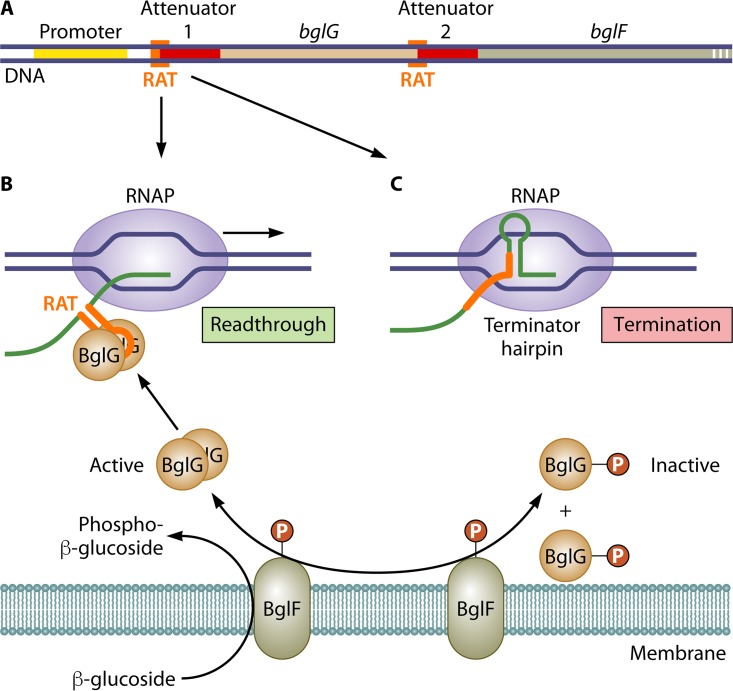FIG 3.
Basic mechanism of BglG-mediated attenuation control of bgl operon expression in E. coli. (A) Regulatory elements of the bgl operon including the attenuators and partially overlapping RAT sites preceding the bglG and bglF genes. (B) In the presence of a β-glucoside substrate, BglF-catalyzed dephosphorylation of monomeric BglG∼P allows formation of active (i.e., RNA-binding-proficient) BglG dimers. These dimers bind to and stabilize RAT secondary structures in the nascent leader transcript that prevent terminator hairpin formation at attenuators 1 and 2. The result is readthrough transcription at each site. (C) In the absence of β-glucosides, BglF-catalyzed phosphorylation of dimeric BglG produces monomeric and membrane-bound BglG∼P that is unable to bind the nascent bgl transcript and disrupt terminator hairpin formation. Consequently, most transcripts initiated at the bgl promoter are terminated at either attenuator 1 or 2, and only minimal levels of BglG, BglF, BglB, and BglH are synthesized.

